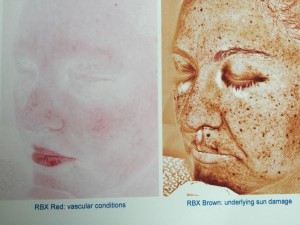 We are having another deliciously schizophrenic spring in DC. This means some days are perfect, with low humidity and breeze that blows the heat of the sun off the skin; other days, it’s hot and humid like the inside of a mouth, and the rays beat down on us just as intensely through clouded skies as through hazy ones, but not as badly as when it’s hot and humid and sunny. This past Memorial Day, we stood under the blazing sun, remembering those who gave their lives so we could enjoy sun, breeze, life, and freedom.
We are having another deliciously schizophrenic spring in DC. This means some days are perfect, with low humidity and breeze that blows the heat of the sun off the skin; other days, it’s hot and humid like the inside of a mouth, and the rays beat down on us just as intensely through clouded skies as through hazy ones, but not as badly as when it’s hot and humid and sunny. This past Memorial Day, we stood under the blazing sun, remembering those who gave their lives so we could enjoy sun, breeze, life, and freedom.
The one constant in this spring and summer is sun. So how do you protect your skin from melanoma and sun damage? You’re probably not going to like the answer: stay out of the sun, wear a hat and long sleeves, and keep yourself mostly indoors at peak sun hours –between 10 a.m. and 2 p.m. I know you’re either rolling your eyes or laughing out loud because it’s just not possible, especially if you lead an active life. What’s your best bet then? Slather on the sunscreen and reapply every two hours, naturally. But how can you be sure that the sunscreen you’re using is good for you (and for your family, should you happen to have a brood who also needs sun protection)?
The Environmental Working Group (EWG) recently published their 2015 Guide to Sunscreens and they kindly invited me to attend their briefing. The main draw, apart from a very interesting conversation and Q&A session with EWG president and cofounder Ken Cook and registered dietitian Ashley Koff –as well as EWG research scientists who painstakingly tested every sunblock, sunscreen, and tinted moisturizer available in the US market– was a Canfield camera. The camera, a tool normally used in dermatologists’ offices to visualize and help diagnose skin abnormalities, was the runaway success. In this case it was used as an informative tool rather than a diagnostic tool, but the cheerful girl operating the machine gave us a brief idea of what to look for: Clusters of darker brown in the skin (in the RBX Brown photo) and what she called an “All Roads Lead to Rome” pattern of vascularization in the RBX Red photo help doctors figure out if there are underlying malignancies in the skin. Of course, a manual check of your skin should be something you do on a regular basis. Here is a useful link from the folks at skincancer.org on knowing how to check your skin’s tags and moles, and what to look for.
The EWG’s tool to finding a good sunscreen, which you can access by clicking this link, also features a link to the whole report as well as a Hall of Shame featuring the sunscreens and sunblocks that either inflate their protection claims –i.e. NO sunscreen or sunblock can protect you all day– or contain chemicals such as oxybenzone, which although it absorbs UVA rays (which is good for sun protection), also has been shown to be a hormone disruptor in women, according to the NIH.
Please protect your skin this sunny season. If you don’t do it for your future self, do it for the hypochondriac in the shade, hiding under the hat.
Oh, who am I kidding: do it for yourself.

We’re happy to be on the EWG’s recommended list! One thing we’d add no matter what sunscreen you choose. Make sure it’s labeled “broad spectrum”. This means you’ll get UVA and UVB protection. Since both cause skin damage it’s super important. Our natural mineral sunscreen is one example.